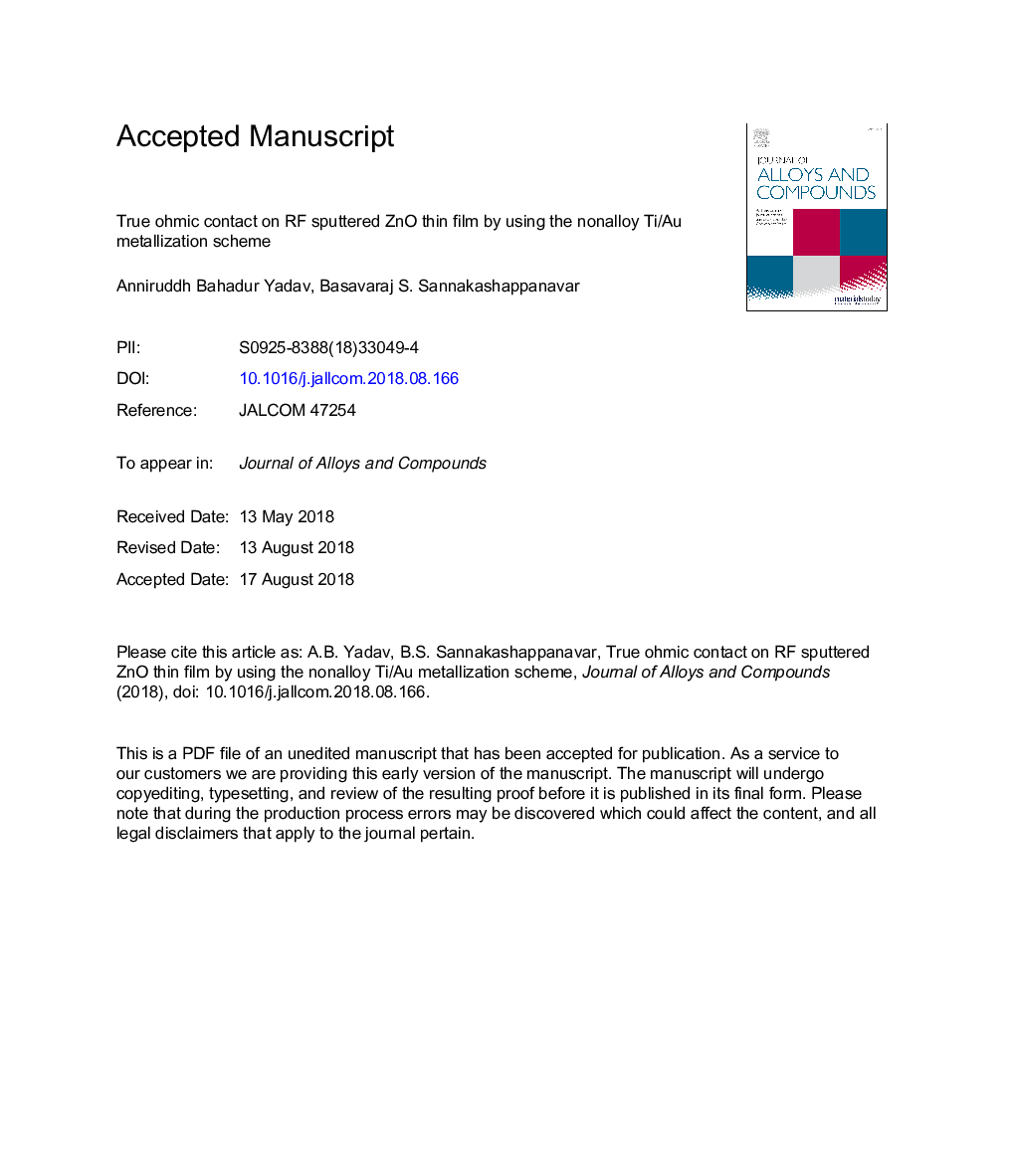| Article ID | Journal | Published Year | Pages | File Type |
|---|---|---|---|---|
| 8943368 | Journal of Alloys and Compounds | 2019 | 31 Pages |
Abstract
Metal contact (Ohmic or Schottky) is vital for building different ZnO based IC compatible electronic devices. Literature has seen a tremendous development on metal contacts on this specific semiconductor by using a range of metallization scheme, but in all cases, ZnO film was very thick, highly doped, and deposited on Al2O3 substrate, even though this substrate is not appropriate for modern IC technology. For estimation of the specific contact resistance, transmission line method (TLM) has been used predominantly instead of Schottky barrier height (SBH) model, considering thermionic emission (TE) theory. However, SBH model is more realistic and furnishes accurate statistics of the distinct parameters of ohmic contacts compared to TLM theory, where TLM gives only specific contact resistance. So, we are presenting the electrical properties of Ti/Au nonalloy ohmic contact developed on 20â¯nm undoped RF sputtered ZnO thin film on SiO2/p-Si and SiO2/n-Si substrates using SBH model considering thermionic emission theory. Further, using X-ray diffraction, photo luminance, and scanning electron microscopy, we were investigated the crystal structure, energy band gap, and surface morphology of the thin film. And, current-voltage (I -V) data were measured using a semiconductor parameter analyzer. Barrier heights and other parameters of developed metallization scheme extracted from experimental I-V characteristics of the fabricated ohmic contacts considering carrier transport at the interface is governed by thermionic emission theory. It can be found that the deviation in barrier heights which are estimated from semi -log current versus voltage (ln(I)-V) characteristics and extracted from Richardson plot, because of barrier inhomogeneity, series resistance, and actual contact area. To decrease this deviation we have analyzed the barrier heights after rectify the voltage axis by considering the series resistance, but series resistance correction alone is not sufficient. Finally, lowest specific contact resistance was achieved compared to any metallization scheme using Richardson plot, this approach and structure are first time reported specifically on ZnO.
Related Topics
Physical Sciences and Engineering
Materials Science
Metals and Alloys
Authors
Anniruddh Bahadur Yadav, Basavaraj S. Sannakashappanavar,
